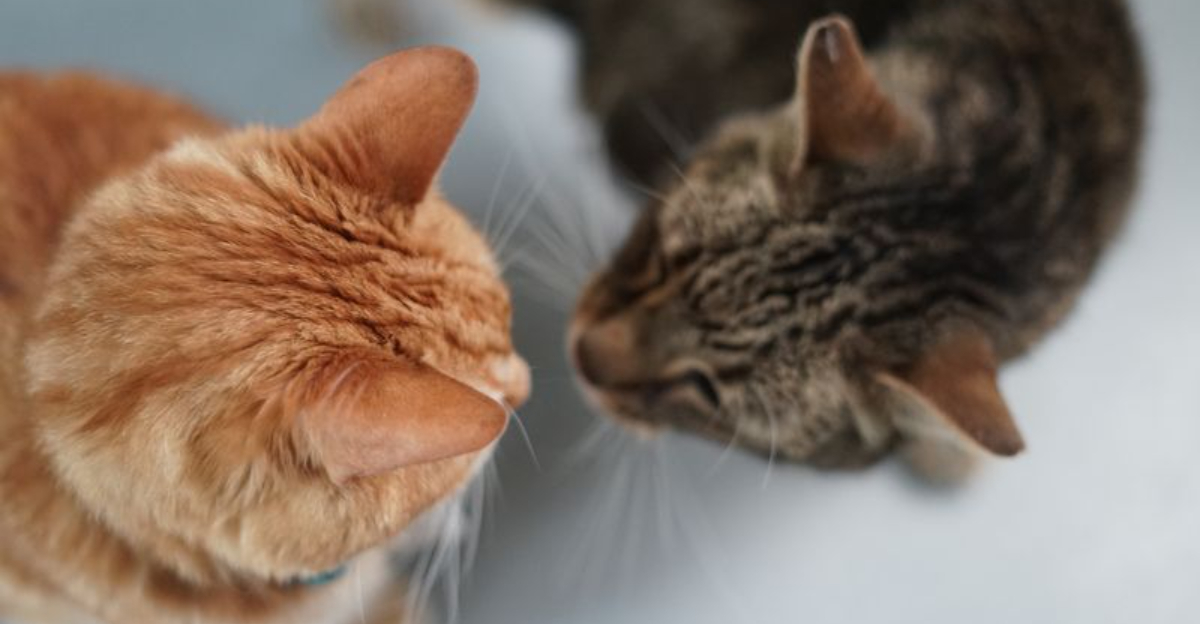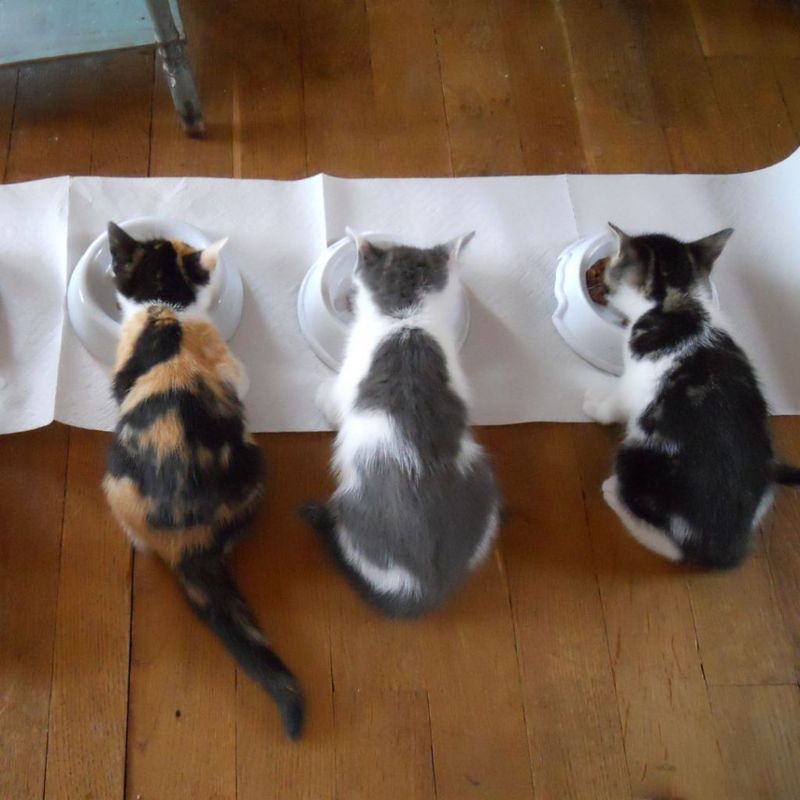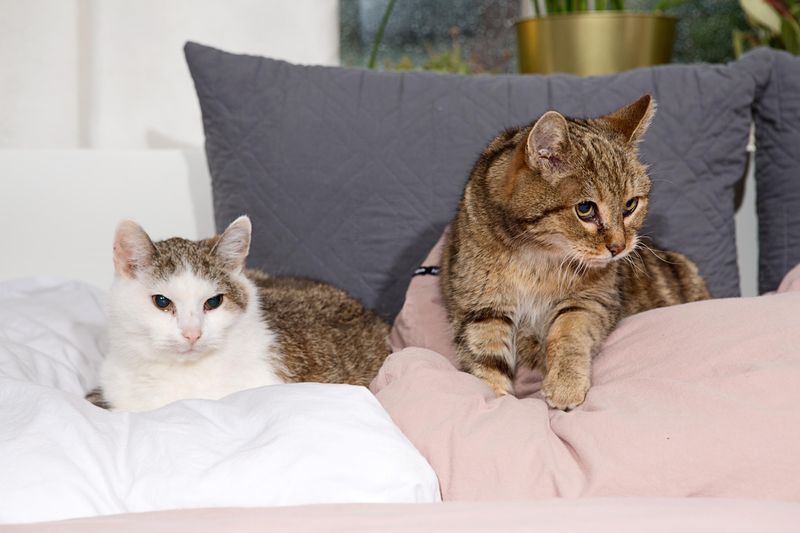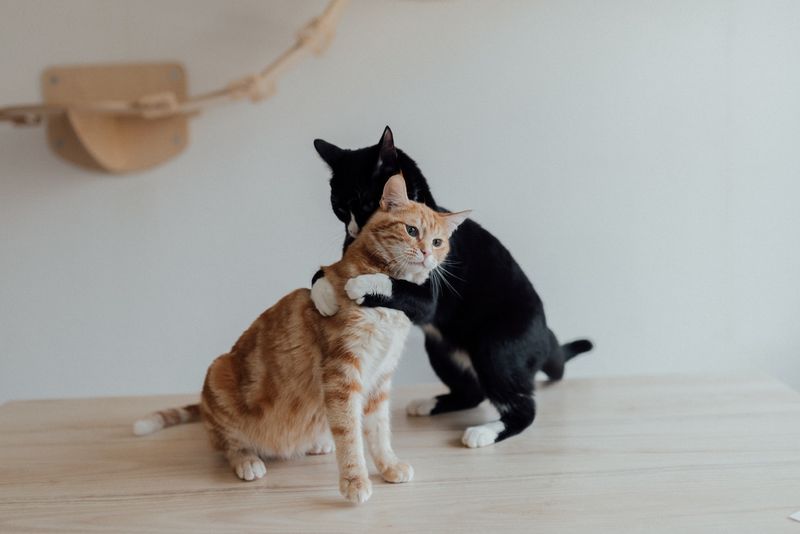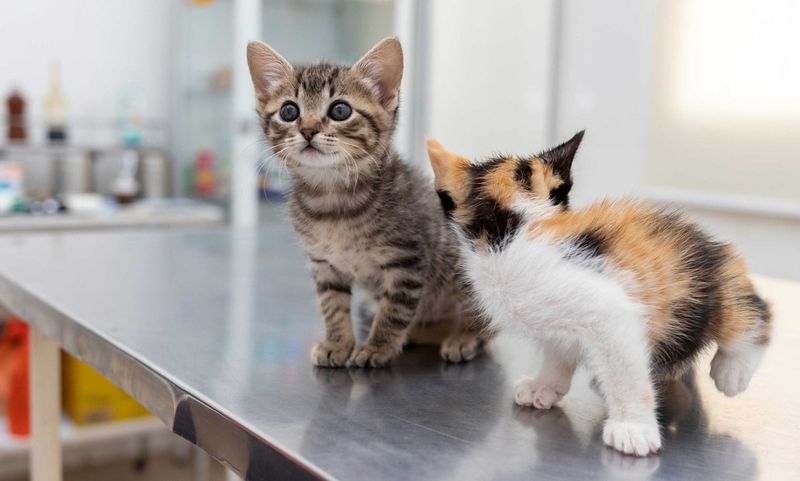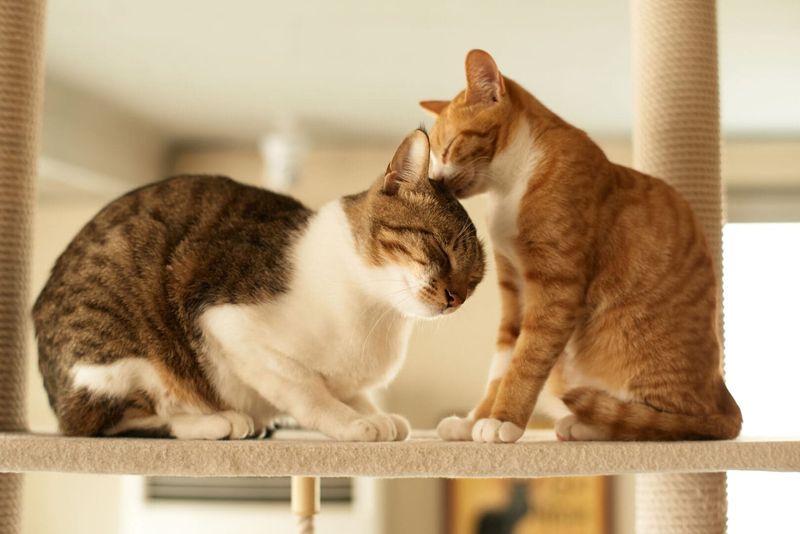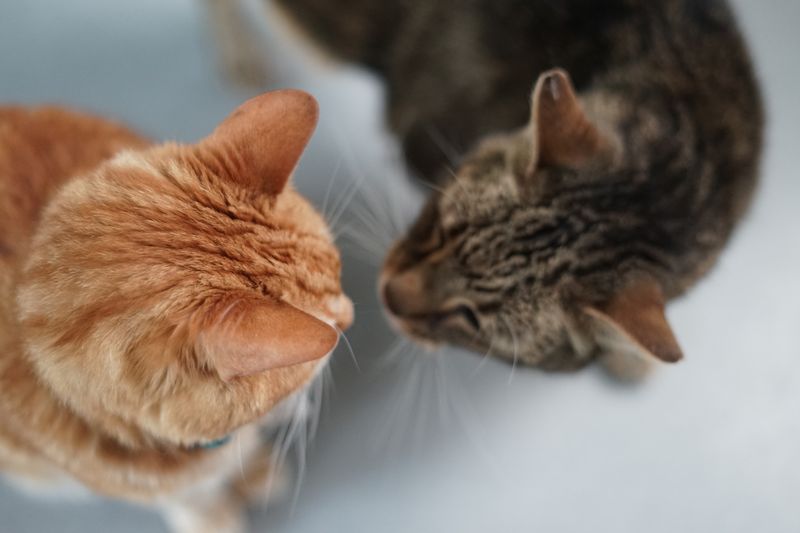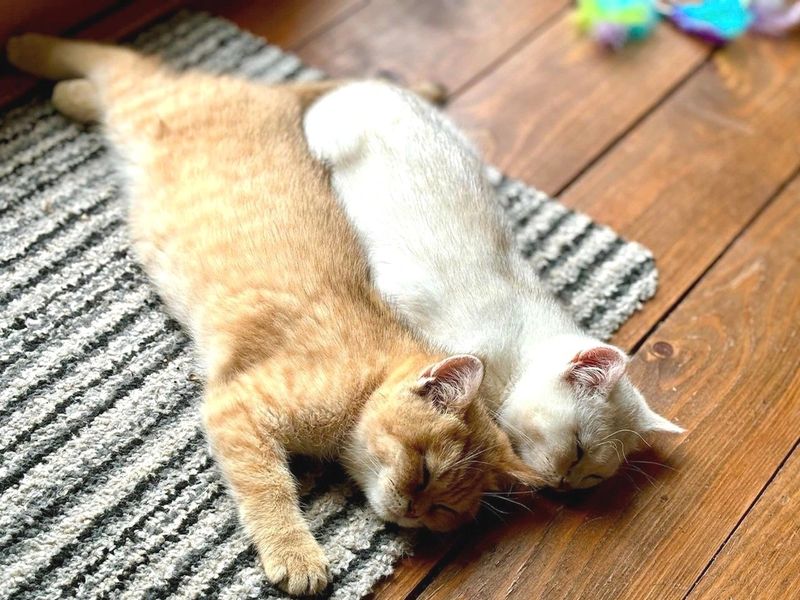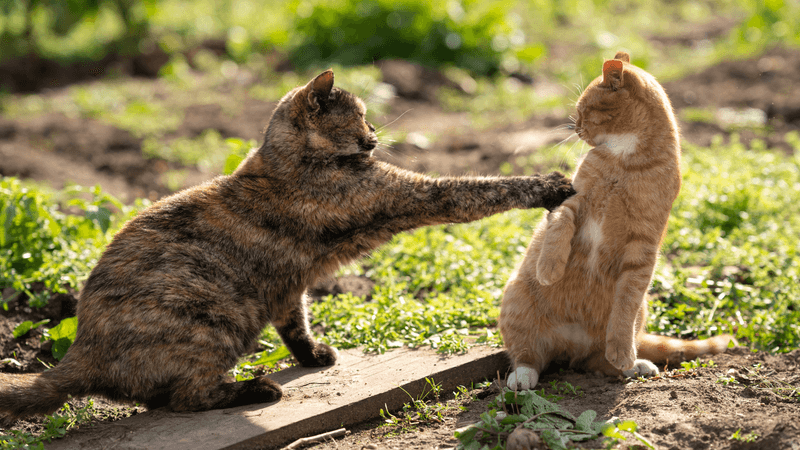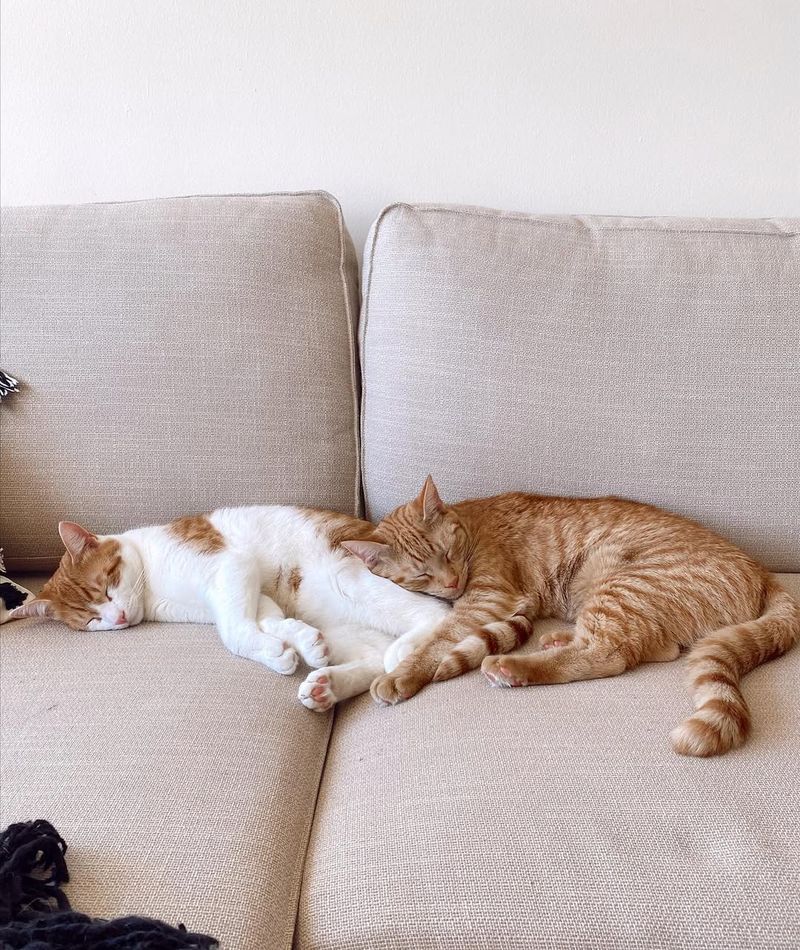📖 Table of Content:
- 1. Provide Adequate Territory
- 2. Separate Resources
- 3. Recognize Cat Personalities
- 4. Provide Ample Playtime
- 5. Ensure Regular Vet Visits
- 6. Use Calming Products
- 7. Gradual Introduction of New Cats
- 8. Offer High Perches
- 9. Maintain a Routine
- 10. Observe Body Language
- 11. Create Safe Retreats
- 12. Enrich the Environment
- 13. Respect Individual Space
Living with multiple cats can be a rewarding experience, but it often comes with its challenges. Cats, by nature, are territorial creatures, which can lead to disputes and tension if their space is not properly managed. However, with the right approach, creating a harmonious environment for all can be achieved.
Understanding the needs and behaviors of each cat is key to reducing conflicts. Recognizing what triggers territorial disputes and providing separate resources for each cat can help ease tensions. With patience and attention, it’s possible to guide cats toward peaceful coexistence.
By following a few simple strategies, it’s possible to prevent fighting and promote a calm atmosphere. These tips encourage healthier relationships between your feline companions. A little effort can go a long way in ensuring a peaceful, happy home for both cats and their owners.
1. Provide Adequate Territory
Cats are territorial creatures, and having enough space is crucial. Ensure each cat has its own territory by providing multiple cat trees, perches, and hiding spots. This setup helps them feel secure and reduces the urge to fight over space.
Create vertical spaces with shelves or trees to expand their territory upwards, giving them more room without needing additional floor space. Adding cozy beds in different areas also offers choices, making them feel more in control of their environment.
2. Separate Resources
Separate food and water bowls are vital in preventing competition. Provide each cat with its own set of bowls in different locations around the house. This minimizes the chance of conflict during meal times.
Allowing cats to eat at their own pace without feeling rushed or threatened promotes a peaceful atmosphere. Additionally, separate litter boxes placed in various spots can prevent territorial disputes and encourage good litter habits.
3. Recognize Cat Personalities
Understanding the distinct personalities of your cats can greatly aid in minimizing conflicts. Some cats are naturally more dominant, while others are shy and reserved. Acknowledging these differences helps tailor your approach to each cat’s needs, reducing tension.
Spend time observing their interactions to learn whom they get along with best and who might need more space. This knowledge aids in creating a balanced environment where all cats feel understood and respected.
4. Provide Ample Playtime
Playtime is not just fun; it’s essential for stress relief among cats. Engaging them in interactive play helps burn off excess energy that might otherwise lead to aggressive behavior. Use toys like feather wands and laser pointers to stimulate their hunting instincts.
Ensure that each cat receives individual attention as well, strengthening your bond with them and reducing feelings of jealousy or competition. Regular play sessions can keep your cats happy and harmonious.
5. Ensure Regular Vet Visits
Keeping up with regular vet visits is key to ensuring your cats remain in top health. Health issues that are not detected early could lead to frustration and increased tension. Veterinarians are experts at pinpointing causes of behavioral changes and offering advice.
These visits also help manage stress-related illnesses, ensuring your cats remain peaceful. Keeping vaccinations up-to-date and monitoring their health proactively prevents many issues that could disrupt harmony.
6. Use Calming Products
Pheromone diffusers work by mimicking natural cat scents, creating a calming atmosphere. These products can help ease tension and make your cats feel more relaxed and secure.
Sprays and collars also work effectively in areas where tension might arise. By using these products, you can help your cats feel more secure and less anxious, significantly reducing the likelihood of skirmishes.
7. Gradual Introduction of New Cats
Introducing a new cat requires patience. Gradual introductions reduce stress and allow resident cats time to adjust. Start with scent swapping by exchanging bedding or toys, allowing them to familiarize themselves with the new cat’s scent.
Physical introductions should be slow, using barriers initially to prevent direct contact while still allowing visual interactions. This method helps prevent overwhelming the cats and minimizes potential conflicts.
8. Offer High Perches
Cats feel safer when they have high perches to retreat to, where they can observe their territory without being disturbed. Installing cat trees or shelves gives them an elevated space to relax, helping reduce stress and territorial behavior.
These elevated spaces also reduce territorial disputes by providing multiple options for each cat. This setup fosters a peaceful environment, as they have ample spots to claim without interfering with each other.
9. Maintain a Routine
A regular routine is key to a cat’s well-being. By setting predictable times for food, play, and relaxation, cats experience a sense of security that can lower stress and prevent hostile behavior.
By sticking to a routine, you help your cats know what to expect, reducing stress and promoting harmony. Consistent routines make it easier for cats to coexist peacefully, knowing their needs will be met regularly.
10. Observe Body Language
Reading your cats’ body language is key to preventing fights. Look for signs of stress or aggression, such as flattened ears, twitching tails, or dilated pupils. Recognizing these signals early allows you to intervene before a conflict escalates.
Encourage positive interactions by praising and rewarding calm behavior. This attentiveness nurtures a peaceful home environment, as you become adept at managing tensions appropriately.
11. Create Safe Retreats
Providing a safe space ensures cats have a place to escape to when they feel overwhelmed. Quiet corners with soft bedding offer a sanctuary where they can unwind without disturbance.
These retreats are crucial for shy or anxious cats, allowing them to recharge and feel secure. Such spaces contribute significantly to reducing fights, as cats have designated areas to retreat when needed.
12. Enrich the Environment
A stimulating environment is essential for your cat’s well-being. By adding scratching posts, climbing trees, and interactive feeders, you can reduce frustration and prevent aggression caused by boredom.
This variety prevents boredom, offering healthy outlets for their energy. Keeping their environment dynamic and engaging supports harmonious living, as cats are less likely to engage in destructive or aggressive behaviors.
13. Respect Individual Space
Giving cats their own personal space helps avoid conflicts. Set up designated zones for feeding, resting, and playing, and add their belongings to make these spaces feel uniquely theirs.
Understanding and respecting these boundaries reduces territorial disputes and keeps the peace. Each cat knowing they have a secure, private area helps them feel valued and understood, fostering a harmonious household.
